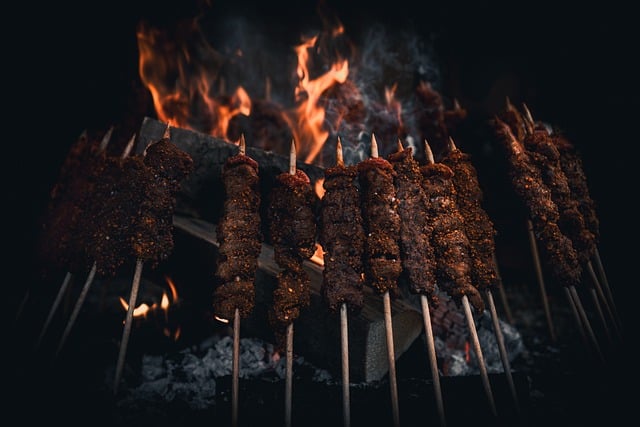Sizzling Skewers: The Global Grill Revolution
Embark on a mouthwatering journey through the world of skewered delights. From street corners to high-end restaurants, kebabs and their international counterparts are taking center stage. Discover how this simple cooking method is sparking culinary creativity and bringing people together over flames and flavors.

The global popularity of skewered foods can be attributed to their convenience and communal nature. In many cultures, gathering around a grill to cook and share skewers is a social event, fostering connection and conversation. From backyard barbecues to street food markets, the act of grilling and eating skewers brings people together in a way few other foods can.
Innovative Ingredients Redefining Kebabs
While traditional kebabs often feature meat as the star, innovative chefs and home cooks are expanding the definition with creative ingredient combinations. Vegetable-centric skewers are gaining popularity, with options like grilled halloumi and watermelon, or smoky eggplant and cherry tomato kebabs. Fruit skewers, both savory and sweet, are also making waves – think grilled pineapple with a chili-lime glaze or peach and prosciutto skewers.
Seafood skewers are another area of innovation, with chefs experimenting beyond the classic shrimp kebab. Octopus tentacles, scallops, and even whole small fish are finding their way onto skewers, often paired with complementary vegetables or fruits. The result is a visually stunning and flavorful dish that elevates the humble kebab to new heights.
Global Flavors on a Stick
As food cultures continue to blend and evolve, so do the flavor profiles of skewered dishes. Fusion kebabs are emerging, combining ingredients and seasonings from different culinary traditions. Imagine a Moroccan-inspired lamb kebab with a Thai coconut curry marinade, or a Mexican-style carne asada skewer topped with chimichurri sauce.
This cross-cultural approach extends to marinades and sauces as well. Chefs are experimenting with unique flavor combinations, such as miso-glazed chicken skewers or tandoori-spiced tofu kebabs with a mint-yogurt dipping sauce. The result is a global flavor journey, all conveniently served on a stick.
Techniques and Tools for Perfect Skewers
Achieving the perfect skewer requires more than just threading ingredients onto a stick. The art of balancing flavors, textures, and cooking times is crucial for a successful kebab. Marination plays a key role, not only in flavor development but also in tenderizing tougher cuts of meat. Techniques like alternating ingredients on the skewer to promote even cooking and using dual skewers to prevent rotation are becoming more widely adopted.
The tools of the trade are evolving as well. While traditional metal or bamboo skewers still have their place, innovative designs are emerging. Flat skewers prevent food from spinning, while double-pronged skewers offer better stability for larger pieces. For the eco-conscious, reusable stainless steel or silicone-tipped skewers are gaining popularity as sustainable alternatives to disposable options.
The Social Media Skewer Sensation
In the age of Instagram and TikTok, the visual appeal of skewered foods has contributed to their viral status. Colorful, meticulously arranged kebabs make for eye-catching content, often showcasing the artistic side of food preparation. Social media has also become a platform for sharing unique skewer recipes and techniques, inspiring home cooks to experiment with their own creations.
The hashtag #kebabsoftheworld has gained traction, with food enthusiasts sharing their discoveries of regional skewer specialties from around the globe. This digital exchange of ideas has led to a greater appreciation for the diversity of skewered foods and has inspired chefs to push the boundaries of traditional recipes.
Skewer Savvy: Tips and Tricks
-
Soak wooden skewers in water for at least 30 minutes before use to prevent burning
-
Cut ingredients into uniform sizes for even cooking
-
Leave small spaces between items on the skewer to ensure heat circulation
-
Brush skewers with oil before grilling to prevent sticking
-
Use a two-zone grilling method for more control over cooking temperatures
-
Experiment with different woods or herbs on the grill for added flavor
-
Consider the order of ingredients on the skewer based on cooking times
In conclusion, the humble skewer has evolved into a canvas for culinary creativity, bringing together global flavors, innovative techniques, and social dining experiences. As this trend continues to sizzle, we can expect to see even more exciting variations on the classic kebab, cementing its place as a beloved and versatile dish in the modern culinary landscape. So fire up the grill, grab your skewers, and join the global grill revolution – your taste buds will thank you.





